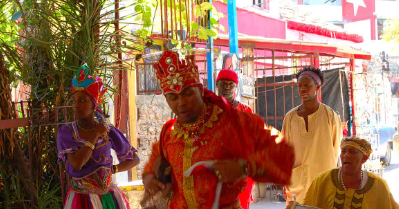
Meaning “Way of the Saints” in Spanish, Santeria, an Afro-Caribbean religion merged with Roman Catholic beliefs, is based significantly on the traditions of the Yoruba nation in today’s Nigeria and Benin in West Africa. Emerging during the 17th century, the Afro-Caribbean religion dating back to the days of slavery has been embedded in Cuban society ever since. The primary focus of Santeria is on creating healthy relationships with other humans and Orishas (powerful guardian spirits), and rituals are often directed toward ancestor and spirit worship.
There is no strict orthodoxy or key sacred text in Santeria. Some adherents may believe in reincarnation. Others may believe in heaven in the Roman Catholic sense. Many adherents believe that when a person passes away, the individual’s spirit is freed. While liberated, the spirit still needs protection so that it does not become captured by the malevolence of an ill-wisher. Funeral rites (called “itulu”), therefore, aim to calm the spirit of the departed. Santerians believe that Orishas will provide them with help and guidance, but only if the creyente (“believer”) practices the appropriate rituals. Rituals, such as dancing, eating, and speaking with the Orisha help ensure protection of the spirit. The tambor para según drum ceremony is an especially important ceremony that honors the spirit of the departed. Animal sacrifices, too, are part of funeral ceremonies. Animal sacrifices are meant to provide food for the Orisha as Santerians believe that if the spirit is not fed, the spirit will die.
Santeria’s approach to loss consists of the pillars of faith-ancestor worship and reverence for the deceased.
Woodlawn continues to be a non-sectarian cemetery without a specific religious affiliation.
